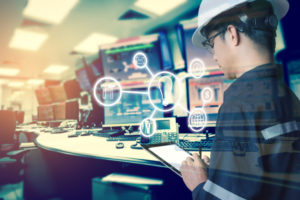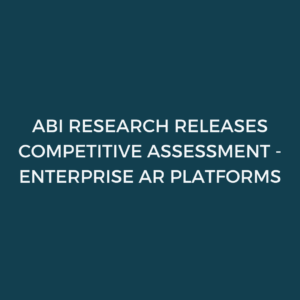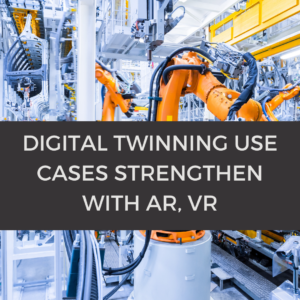3 Ways Augmented Reality Will Help Quality Managers

There are three ways that quality inspectors can benefit from augmented reality-equipped headsets:
Real-time Feedback with Computer Vision
Augmented reality-enabled headsets can provide real-time feedback to quality inspectors. By pairing an augmented reality (AR) headset (assuming it has a camera) with the latest computer vision software, an AI algorithm may be able to spot defects or anomalies in real-time. For example, industrial companies could integrate AI with upcoming AR headsets to automatically find flaws in production.
In layman’s terms, computer vision is the process of making sense of digital images. A computer can understand what is in an image and extract information from it. This can be used to detect objects, recognize faces, and track movement. For the industrial sector, computer vision helps find imperfections on surfaces or different pieces of equipment.
With augmented reality, headsets will provide real-time feedback to quality inspectors on the manufacturing floor. More importantly, AR headsets can superimpose graphics in the quality inspector’s field of view. By overlaying labels or annotations on top of the image, the quality inspector can be given feedback on what to look for and where to find it. This technique of defect superimposition will increase the accuracy of visual defect detection and the speed at which human inspectors do it.
Training and Guidance
New augmented reality technologies can also provide training and guidance to quality inspectors. By providing step-by-step interactive instructions, augmented reality can help new quality inspectors learn the ropes of a job quickly and easily. And for experienced quality managers, augmented reality can provide additional guidance on finding specific types of defects.
For example, automotive inspectors could use augmented reality to help them identify defects on a vehicle door. Additionally, augmented reality could guide the best inspection techniques to examine a product for defects. Such a technology would help ensure that all products are visually inspected in the same manner, thus increasing accuracy.
Training is important for all factory workers, but it is vital for people in charge of quality control, as they are the ones who determine whether a particular product is in or out of tolerance. Therefore, making training and on-the-job education more interactive and enjoyable for quality inspectors should be a priority for many manufacturers.
Data Analysis
Finally, augmented reality headsets can also be used for data analysis. After an inspection is complete, the data collected by the augmented reality headset can be analyzed to look for trends or patterns. This historical data could then be used to improve the quality inspection process.
For example, if a specific type of defect is common in one area of the factory compared to another, a manufacturer could take steps to address this. Or, if a quality inspector discovers that a particular product line has many defects, the inspector could take action to improve the manufacturing process.
It may be necessary to integrate multiple data sources to implement these improvements, but augmented reality can serve as a core visual baseline to bring outside data into the fold. By spatially registering machine-readable data, AR headset location, and on-device defect detection, a recommendation engine could suggest optimizations for production processes.
When Can I Expect to See AR In My Factory?
It is still early for augmented reality in the industrial sphere, but we can expect to see more augmented reality applications appearing over the next few years. For example, one of the first augmented reality headsets to be released for industrial use is the Microsoft HoloLens. Still, we expect major tech companies to also compete in this market.
In short, AR headsets may take a little while to become commonplace in factories, but augmented reality is not a technology to ignore. The benefits of augmented reality for quality managers are too great.
How to Get Started
If you are interested in learning more about augmented reality for the industrial sector, you can do a few things. First, attend some digital trade shows and technology conferences throughout the year. We highly recommend the NVIDIA conferences. These events will give you a good overview of the current state of augmented reality and where it is headed in the future.
Second, read some recently published white papers on augmented reality for industrial use. This will help you understand how augmented reality can be used in a manufacturing setting. In addition, white paper authors often include technical applications and guides, which can help develop a practical augmented reality strategy.
Finally, if you are looking for a more hands-on approach, consider hiring an augmented reality developer. They can help you develop an AR application tailored specifically for your needs.
Conclusion
Augmented reality can help quality managers find defects before they cause a problem. By pairing an augmented reality headset with computer vision, these quality managers will get defect-finding assistance on their augmented reality headsets when visually inspecting products. This technology is still in its early stages, but augmented reality will likely revolutionize the quality inspection process.









